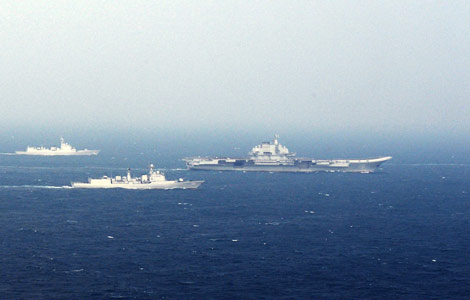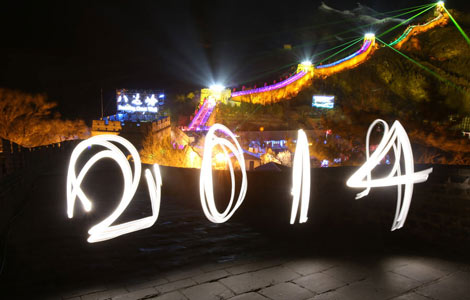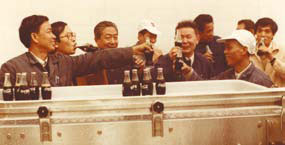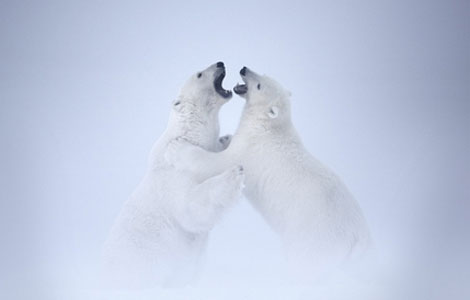Coca-Cola: A witness to the nation's reform
Updated: 2014-01-02 08:10
By Hao Nan (China Daily)
|
||||||||
Coca-Cola was the first US company to operate on the Chinese mainland after the nation began its opening-up policies in 1979, the same year that Sino-US diplomatic relations were established at an ambassadorial level.
At first the "luxury" drink was sold only at the Friendship Store and hotels for foreigners.
With the changes and development in Chinese society over more than three decades, it is a very different story now as some 140 million servings are sold each day.
The relationship between Coca-Cola and China actually dates back to 1927, when the company set up bottling plants in Tianjin and Shanghai. It became a fashion icon in Shanghai and could be found at international settlements, race courses and beverage kiosks.
But Coca-Cola left the market in 1948 and had no access to return until China signed the Shanghai Communiqu with the United States in 1972 to facilitate normalization of relations.
In 1973, the company sent representatives to Hong Kong to break the ice. At that time, a US company could not directly do business with Chinese companies, so Coca-Cola established a new company called Benetrade in Hong Kong.
Looking for a partner, it first approached China National Cereals, Oils and Foodstuffs Corp - or COFCO - at the Chinese Export Commodities Fair in 1974 in Guangzhou, capital of Guangdong province.
After four years of effort, Coca-Cola signed an agreement with COFCO at the Peking Hotel in late 1978.
The contract called for both sides to set up bottling plants and sell Coke in the main cities and at scenic spots in China. Before the plants were operational, COFCO was responsible for consignment sale of the drink.
Coca-Cola would provide a production line for the bottling plant, while its Chinese counterpart would provide the buildings.
From its headquarters in Atlanta, the beverage giant announced its return to China on Dec 19, 1978. The move made headlines in many international newspapers.
In January 1979, the first 3,000 cases of Coke were shipped from Hong Kong to Beijing and Guangzhou by train. Buyers were limited to foreigners that came to China for business or tourism, Chinese citizens who returned from overseas, and Hong Kong and Macao compatriots.
A bottle of Coke sold at 4 yuan (then about $1), paid in foreign currencies or foreign exchange certificates. At the time, the average monthly salary for a Chinese worker was about 50 yuan.
Since Coca-Cola once had a plant in Shanghai, the city was the first choice for its new facility. But the Shanghai government put up such strong resistance that Coca-Cola relocated the bottling plant to Beijing.
COFCO provided a factory site that before made Peking duck. In the remote suburb of Wulidian, it had no supply of tap water.
To use underground water, Coca-Cola provided its most advanced reverse osmosis treatment system, a technique available only in a few countries at that time.
Even today, the water treatment system is still the mainstream practice in China's beverage industry.
The production line was automatic with a full capacity of 1,200 bottles every minute. The company sent 180 foreign experts and technical engineers to Beijing for the line installation, testing and training.
Considering staff proficiency, market demand and equipment maintenance, the production line was set to first produce 300 bottles a minute.
In April 1981, Coca-Cola's Beijing plant started official production after a week-long trial run. It then started a bottling plant in Guangdong in 1983 and another one in Shanghai in 1986.
At the same time, the company unveiled a concentrate facility in Shanghai.

Since its formula is among the top trade secrets in the world, Coca-Cola requested the concentrate plant be wholly owned. Policy then did not allow wholly foreign-owned businesses in China, so Coca-Cola decided to build two plants - a concentrate plant and a bottling plant - run in joint operations with 50 percent owned by each partner.
Coca-Cola now has 43 plants in cooperation with its three main bottling partners in China. The company's latest $4 billion investment plan will be completed by the end of this year.
Growing together with Coca-Cola, many of its suppliers in the 1980s have also developed into the leading players in the industry, according to the beverage giant.
First TV commercial
Coca-Cola also had its first advertisement designed for the Chinese market broadcast on China Central Television.
In 1986, Queen Elizabeth II visited China for the first time and the British Broadcasting Corp made a documentary.
CCTV wanted rights to the broadcast and came to Coca-Cola for a sponsorship of $200,000. In return, CCTV agreed to broadcast Coca-Cola's TV commercial before and after the documentary.
Coca-Cola realized it was a great way to change its low profile. In the same year its ads were broadcast after Xinwen Lianbo - the most watched news program in China - on CCTV and 18 provincial TV channels.
Many Chinese consumers celebrated their "Coke Moment" with bottles of coke in the ad, which ended with the slogan "Coca-Cola - you can't beat the feeling".
haonan@chinadaily.com.cn
|
Workers drink Coke at the production line installed in a suburban Beijing building provided by COFCO in the early 1980s. Provided to China Daily |
|
Chinese worker on the cover of Time magazine published in April, 1984, with a bottle of Coca-Cola. Provided to China Daily |
(China Daily 01/02/2014 page18)

 125th Rose Parade celebrated in US
125th Rose Parade celebrated in US
 Cold doesn't dissuade 'Polar Bear Swimmers'
Cold doesn't dissuade 'Polar Bear Swimmers'
 First photos of Liaoning battle group made public
First photos of Liaoning battle group made public
 US First Family out for shave ice in Hawaii
US First Family out for shave ice in Hawaii
 New Year's Eve celebrations in Times Square
New Year's Eve celebrations in Times Square
 Revellers embrace the New Year at Great Wall
Revellers embrace the New Year at Great Wall
 Israel frees 26 Palestinian prisoners
Israel frees 26 Palestinian prisoners
 Gen Y's motto: Show me the money
Gen Y's motto: Show me the money
Most Viewed
Editor's Picks

|

|

|

|

|

|
Today's Top News
Bill de Blasio: New York “won’t wait” to tackle inequality
Kim seeks ROK ties, warns US of nuclear 'disaster'
NGO sends SOS on funding
Strong China-US trade and investment links
Colorado starts marijuana retail
De Blasio sworn in as NYC mayor
News on Israel settlement delayed
Diplomacy to focus on neighborhood
US Weekly

|

|









